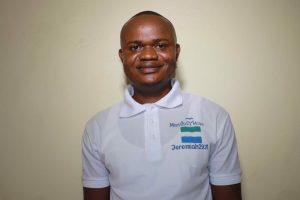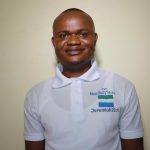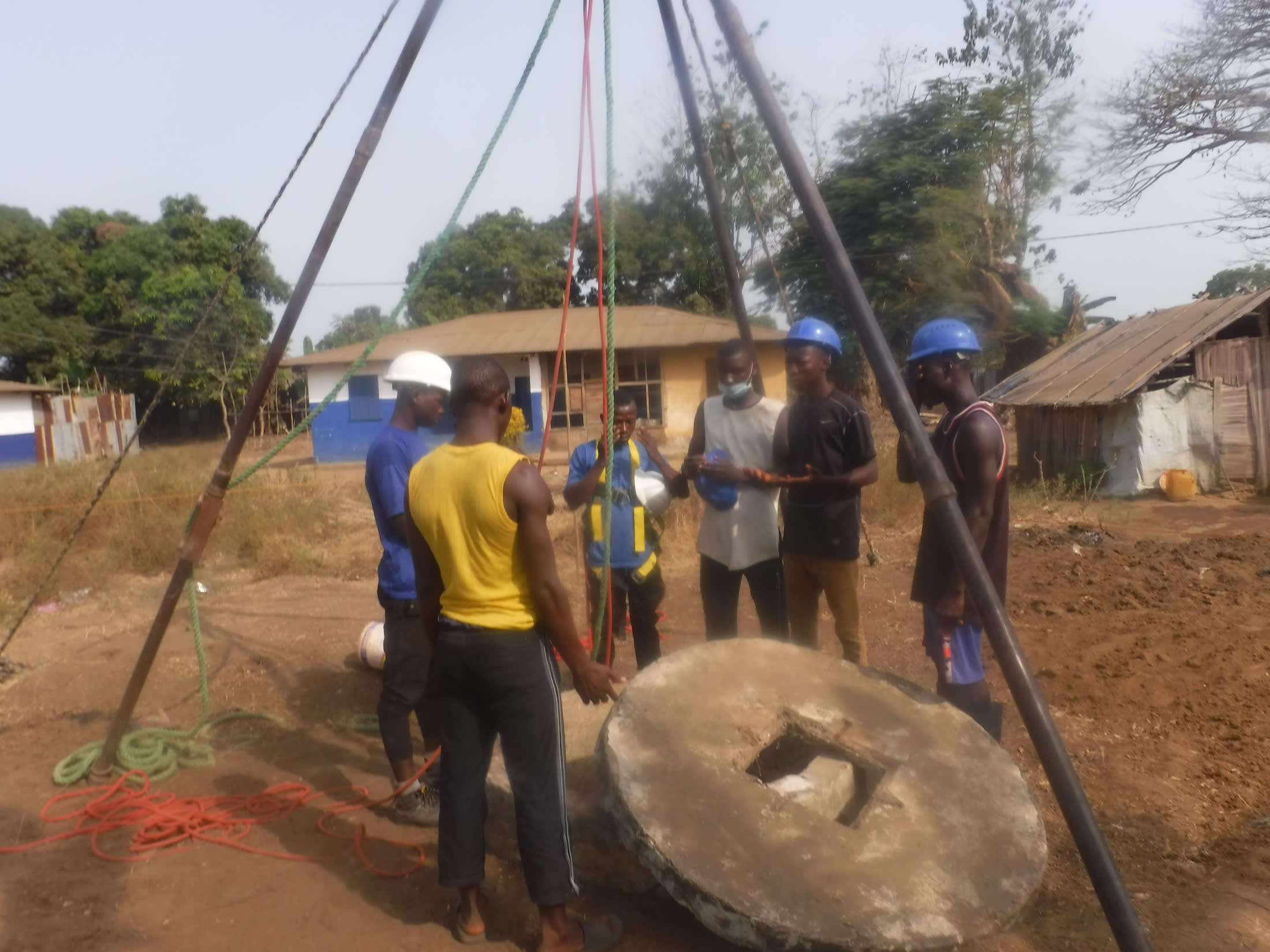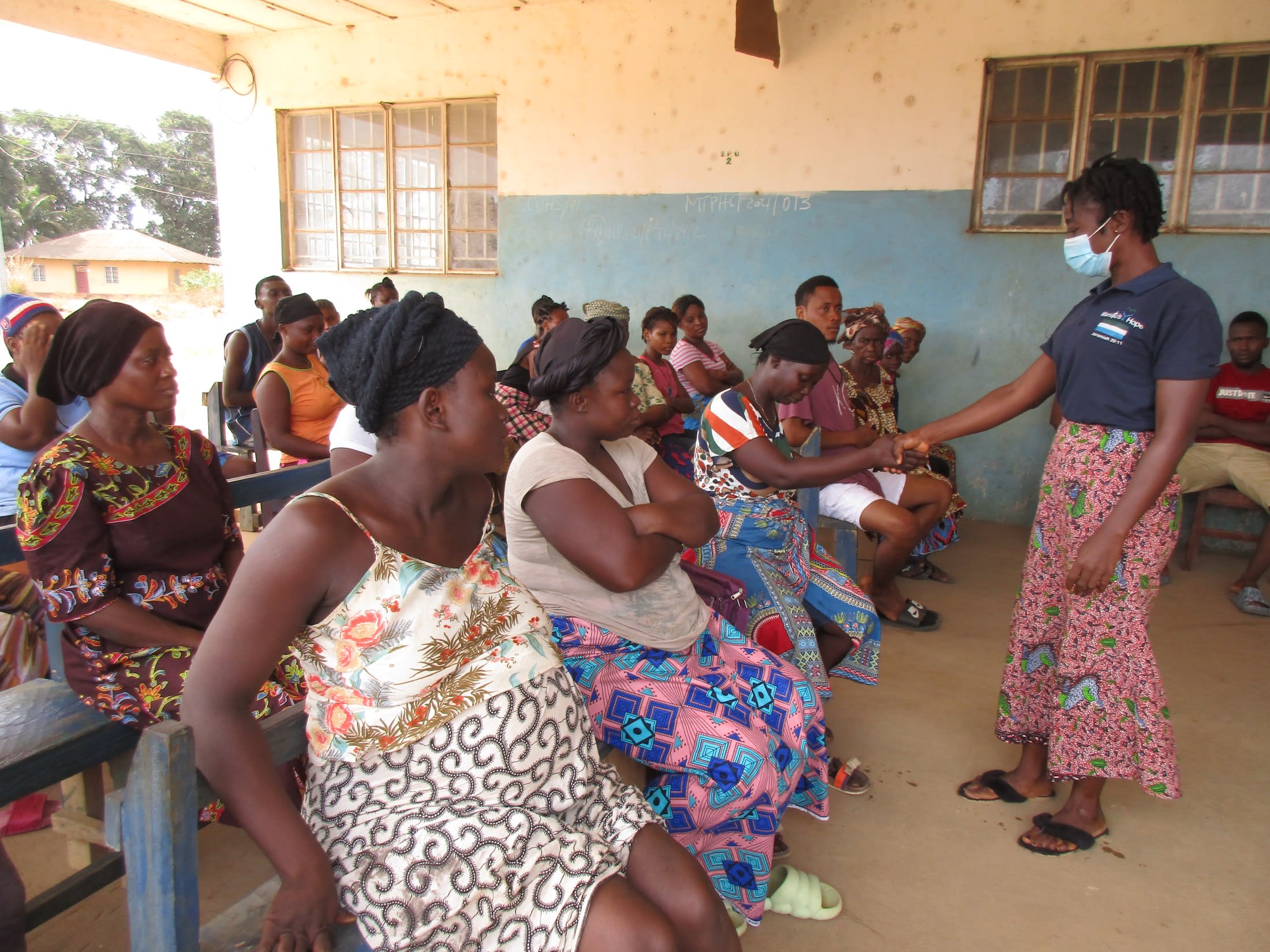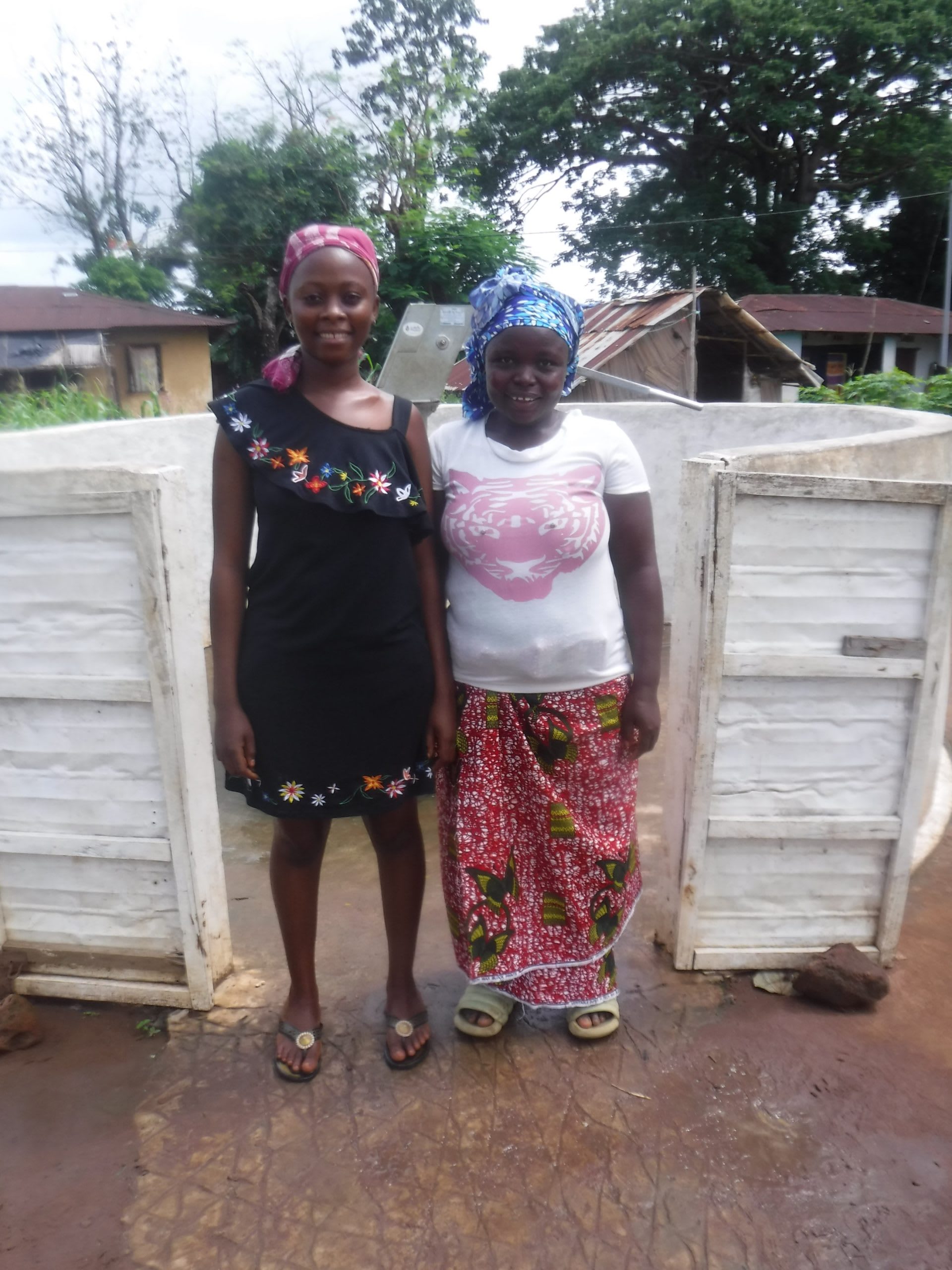As our field officers walked through the bustling Tintafor Police Barracks community, they saw lines of frustrated people at both wells that still provide water. The lines run outside the well gates and into the street. Containers were lined up at the base of the pump to mark people's places in the ever-present queues. Many children walked away with empty buckets because they'd rather wait and be scolded by their parents than try to fight for their spot in line with an elder to whom they should show respect.
"My children help me to fetch water after school, but they stay long at the water well because people bully them from fetching water at their own time of arrival in sequence at the water well," said Koya Sesay, a local trader (in the below picture). "It is really a frustrating condition we are living in this community. We need more water wells in this community to reduce our struggles."

This community is still growing, too. There are 251 people living here, made up of police officers and their families. All the space that could be used within the community has been claimed. Wherever they can plant a few seeds, community members grow their own food, but they can't grow their own water.
This community once had three wells, but one stopped functioning over ten years ago and another draws contaminated water that can't be used for drinking without boiling. This leaves them with only one fully functioning well—and now, even that one has begun to dry seasonally.
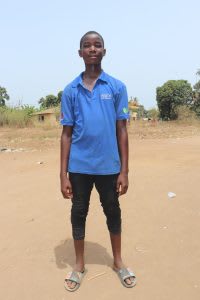 "It is not easy to fetch water from the water wells,said 15-year-old Victor B (in the photo on the left). "I wait [a] long [time] at the water well before I could get a way to fetch water."
"It is not easy to fetch water from the water wells,said 15-year-old Victor B (in the photo on the left). "I wait [a] long [time] at the water well before I could get a way to fetch water."
Victor went on to say that when he tries to fetch water before going to school, sometimes he'll have to give up so as not to be late. This means he won't be able to bathe or have anything to drink before leaving.
"The water wells are open precisely in the morning hours and later in the evening," Victor explained. "The limited time is not enough to provide water for everyone. My mother wait[s] for me to bring water at the house before she could start cooking. It is delaying sometimes."
All these factors have made people desperate for water. They were so excited to give all the necessary data needed to implement the project and are hoping to see its success.
"[The borehole well] will serve as a means of giving life back to the community, because water is life," said Philip, one of our field officers. "Think of a dried-out flower that miraculously comes back to life with a drop of water. That is this community."
Here’s what we’re going to do about it:
Well Rehabilitation
The well marked for this overhaul is dry for a few months every year and needs major work to supply adequate, clean water to the community year round. The pump will be removed, and a hand auger will be lowered inside and powered by a drill team. This hand auger will allow the team to drill several meters deeper to hit a sufficient water column that will ensure the well supplies water throughout all seasons.
As the team drills, casing will be installed, transforming the bottom of this hand-dug well into a borehole. PVC piping will connect this lower system directly to the pump, a construction that we know will also improve the quality of water.
Once this plan is implemented, everyone within the community will have access to safe drinking water in both quality and quantity, even through the dry months.
Hygiene and Sanitation Training
There will be hygiene and sanitation training sessions offered for three days in a row.
After our visit, the hygiene and sanitation trainer decided it would be best to teach community members how to build a tippy tap (a hand-washing station built with a jerrycan, string, and sticks). They will use these tippy taps for handwashing demonstrations, and will also teach about other tools like dish racks and the importance of properly penning in animals.
These trainings will also strengthen the water user committee that manages and maintains this well. They enforce proper behavior and report to us whenever they need our help solving a serious problem, like a pump breakdown.

 Borehole Well and Hand Pump
Borehole Well and Hand Pump









